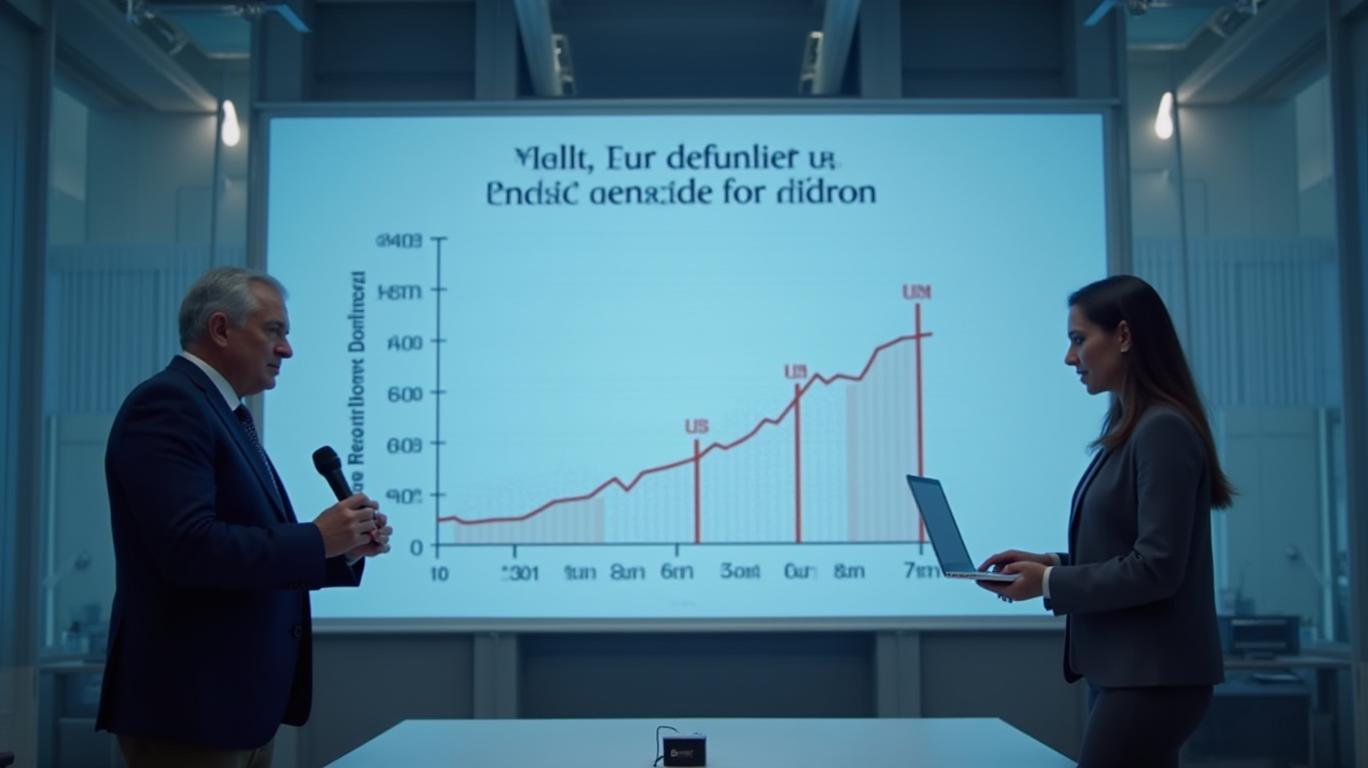Fresenius MedCare: Navigating Headwinds with Strategic Resolve
Fresenius Medical Care (FMS) has long been a bellwether in the renal care sector, and its Q1 2025 results reaffirm its ability to navigate industry complexities while maintaining growth and profitability. Despite macro challenges, including a severe flu season and inflationary pressures, the company delivered robust financial metrics, signaling its strategic initiatives are on track to achieve long-term targets.
Ask Aime: Could Fresenius Medical Care's Q1 2025 results prove it's weathering the storm?
Key Financial Highlights: A Story of Resilience
FMS reported group revenue of €4.88 billion, a 3% increase year-on-year, with organic growth of 5% underscoring underlying strength. The Care Delivery segment, which accounts for 79% of total revenue, grew 2% organically despite headwinds. U.S. operations, its largest market, drove a 6% revenue increase due to Medicare reimbursement hikes and favorable payer mix. However, same-market treatment growth was flat, as a brutal flu season led to higher missed treatments—a temporary drag rather than a structural issue, given rising patient referrals.
In contrast, international Care Delivery revenue fell 19% due to divestitures, though same-market treatment growth accelerated to 2.5%, a positive sign for future scalability. Meanwhile, the Care Enablement segment—covering dialysis products and services—shone with 5% revenue growth, driven by volume gains and pricing momentum. Its operating margin hit 8.3% (excluding special items), marking its first entry into its target margin band of 8-9%.

Margin Expansion: A Strategic Triumph
Operating income surged 35% to €331 million, with the margin improving to 6.8%. Excluding special items, operating income rose 13% to €457 million, with a margin of 9.4%—a testament to cost discipline. The FME25 initiative, a $1.4 billion restructuring program, contributed €68 million in savings in Q1 alone, with cumulative savings now at €750 million since its launch. These savings, alongside pricing power and operational efficiency, are key to FMS’s margin trajectory.
The Care Delivery segment’s operating margin held steady at 8.4%, despite one fewer dialysis day and flu-related disruptions. Meanwhile, Care Enablement’s margin expansion to 8.3% (excluding special items) signals it has reached its long-term target.
Strategic Priorities: Execution Over Execution
FMS’s portfolio optimization continues: divesting non-core assets like Spectra Laboratories and Malaysia clinics has streamlined operations, even if it temporarily dented top-line growth. The company now focuses on high-margin markets, with U.S. treatment growth expected to accelerate beyond the full-year target of 0.5%, supported by rising patient referrals.
The FME25 program remains central to its 2025 goals. With savings tracking ahead of the €180 million annual target, FMS is well-positioned to meet its operating income growth of high-teens to high-twenties percent—a critical metric for investors.
Balance Sheet Strength and Capital Allocation
FMS’s balance sheet shows tangible progress: operating cash flow rose 28% to €163 million, while net leverage improved to 2.8x, down from 2.9x in Q4 2024. Free cash flow turned positive at €21 million, a stark contrast to a negative €2 million in the same period last year. This liquidity buffer positions FMS to fund growth, service debt, and return capital to shareholders—a priority under its new leadership.
Challenges and Risks
The U.S. flu season’s impact on missed treatments highlights the cyclical nature of patient adherence. However, management’s confidence in full-year treatment growth suggests this was an outlier. Inflation remains a wildcard, though FMS has mitigated this via pricing and cost-saving measures. Geopolitical risks, such as regulatory scrutiny in markets like Brazil, could also test FMS’s agility.
Conclusion: A Compelling Investment Case
Fresenius Medical Care’s Q1 results reinforce its status as a defensive yet growth-oriented play in healthcare. With a targeted 2025 net leverage of 2.5x, margin expansion, and FME25 savings on track, FMS is primed to capitalize on secular trends in chronic kidney disease care.
Key data points underpin this thesis:
- Operating income growth: Expected to hit €2.2–2.5 billion in 2025 (vs. €1.8 billion in 2024).
- Care Enablement margins: Now at 8.3%, with further upside as scale benefits materialize.
- Patient base: 299,358 patients globally, a stable and growing demographic as aging populations drive demand.
While near-term headwinds like flu seasons and inflation persist, FMS’s diversified revenue streams and disciplined execution make it a resilient choice for investors. With a 1.8% dividend yield and a stock price near 52-week highs, FMS balances income potential with growth—making it a standout in a sector where few companies deliver both.
In short, Fresenius MedCare isn’t just surviving—it’s thriving, and its Q1 results are a clear rallying cry for long-term investors.


_cbf77e8c1748017079428.jpeg)






